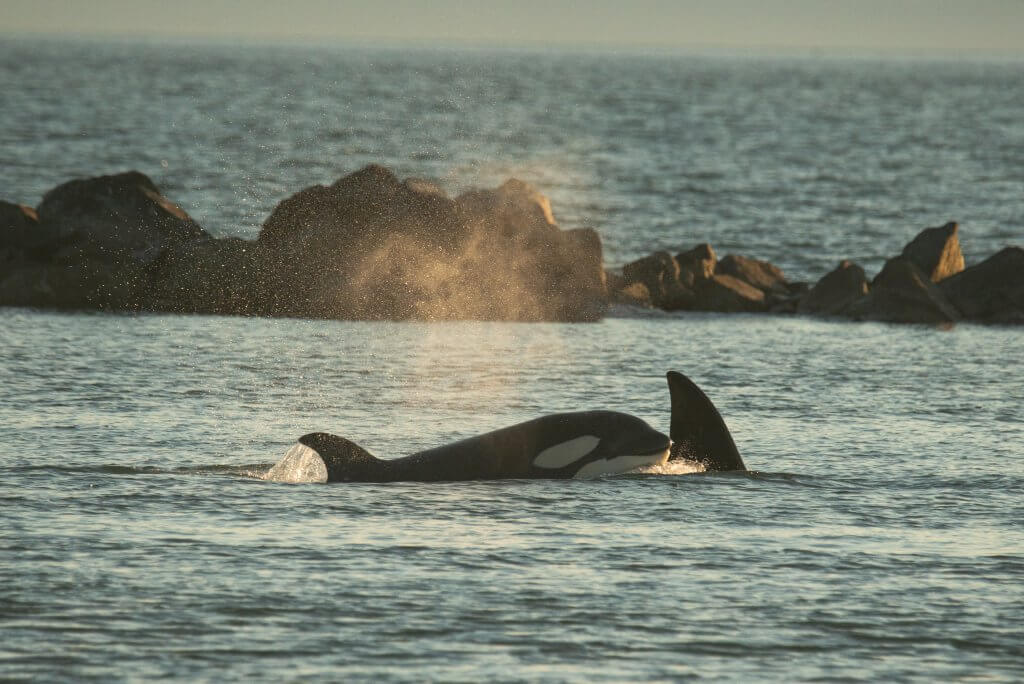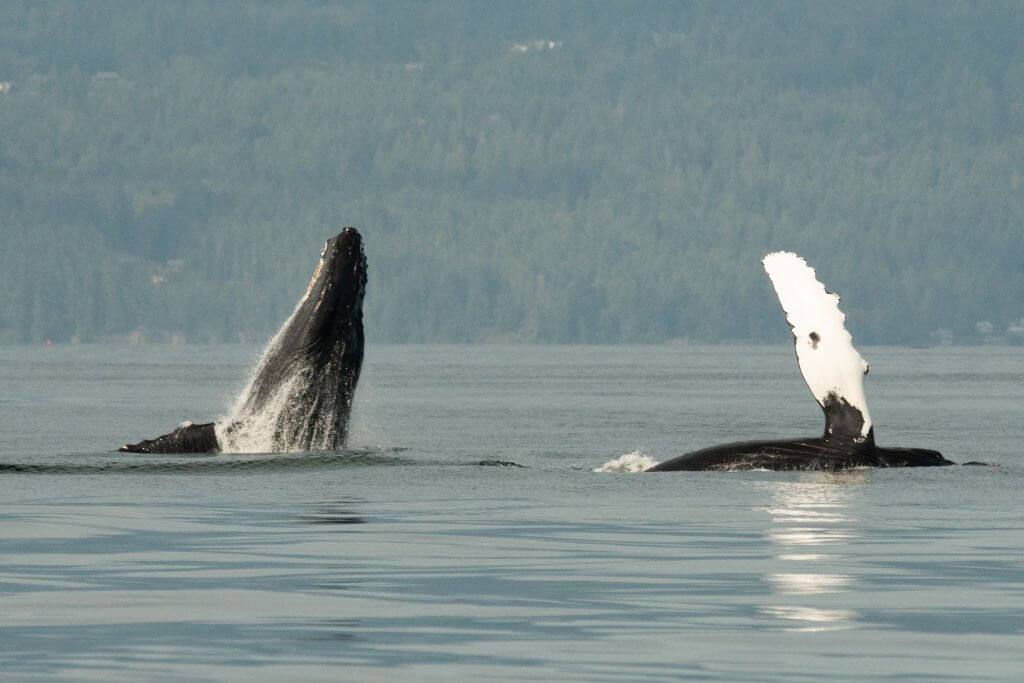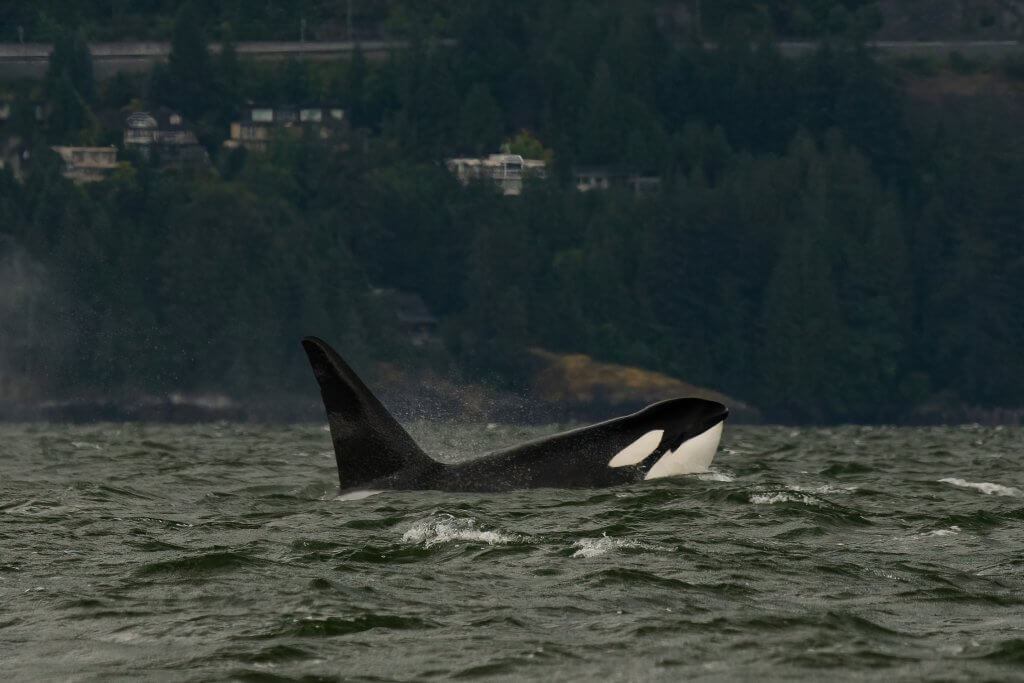British Columbia’s waters are home to an incredible variety of whale species, making it one of the world’s premier whale watching destinations. The coastal waters of BC regularly host at least 23 different species of cetaceans, including orcas (killer whales), humpbacks, grey whales, and minkes, as well as various dolphins and porpoises. These magnificent marine mammals are drawn to the region’s nutrient-rich waters, which provide ideal feeding grounds throughout the year.

From the sheltered waters of the Salish Sea to the open Pacific Ocean, different whale species can be spotted in various locations along BC’s extensive coastline during seasonal migrations and feeding periods. The Vancouver area offers exceptional whale watching opportunities, with species like orcas, humpbacks, and grey whales among the most commonly sighted during tours. Each species displays unique behaviors that delight both casual observers and dedicated whale enthusiasts. The rich marine environment supports not just whales but also diverse ecosystems, including sea lions and countless other marine species that together create unforgettable wildlife viewing experiences.
Key Takeaways
- British Columbia’s waters host 23 different cetacean species, including orcas, humpbacks, grey whales, and minkes.
- The nutrient-rich coastal environment creates ideal feeding grounds, making BC one of the world’s premier whale watching destinations.
- Different whale species can be observed year-round in various locations throughout British Columbia, with Vancouver offering excellent viewing opportunities.
- Strict marine wildlife viewing regulations protect whales while still allowing for meaningful wildlife encounters.
Whale Species Native to BC Waters

Baleen Whales in British Columbia
Several impressive baleen whale species frequent BC’s nutrient-rich waters, filtering massive quantities of tiny prey through specialized baleen bristle instead of teeth. These giants create some of the most spectacular wildlife encounters available during whale watching excursions from Vancouver.
The Humpback Whale (Megaptera novaeangliae) is among the most commonly spotted during tours, known for its distinctive body shape and spectacular surface behaviors. These giants have made a remarkable comeback in BC waters after being hunted nearly to extinction, with population increases of approximately 4-7% annually. Humpbacks frequently delight whale watchers with dramatic breaching displays, tail slapping, and pectoral fin slapping that can be visible from considerable distances.
Grey Whales (Eschrichtius robustus) migrate along BC’s coastline annually, with some individuals staying to feed in local waters during summer months as “resident greys.” They’re recognizable by their mottled appearance, lack of dorsal fin, and distinctive heart-shaped blows. Grey whales practice unique bottom-feeding techniques, rolling onto their sides and filtering sediment for small invertebrates—behaviors sometimes visible from above the water in shallow coastal areas.
Minke Whale (Balaenoptera acutorostrata) also inhabit these waters throughout the year. Minkes are not often seen in our waters as they often spend more time down in US waters.
Toothed Whales of the BC Coast
BC waters host an impressive diversity among toothed whales, from the iconic orca to rarely seen deep-diving species. These predators use echolocation and hunt actively for fish or other marine mammals.
Killer Whales (Orcinus orca) are BC’s most iconic toothed whales and the centerpiece of many whale watching experiences. These intelligent predators are divided into distinct ecotypes with different behaviors:
- Southern Resident Killer Whales: Endangered salmon specialists typically found in the Salish Sea and Strait of Juan de Fuca.
- Northern Resident Killer Whales: More numerous salmon-eaters found primarily along BC’s central coast.
- Bigg’s (Transient) Killer Whales: Mammal-hunters that prey on seals, sea lions, and occasionally other whales; increasingly common throughout BC waters.
- Offshore Killer Whales: Rarely observed deep-water specialists that primarily eat sharks and large fish.
Each orca ecotype has unique vocalizations, social structures, and hunting techniques that naturalist guides explain during whale watching excursions from Vancouver.
Pacific White-Sided Dolphins (Lagenorhynchus obliquidens) frequently travel in large, energetic pods throughout BC waters. These playful cetaceans are often seen feeding together as well as performing acrobatic leaps that create perfect photo opportunities. Pods can contain hundreds of individuals during seasonal aggregations, creating spectacular wildlife displays.
BC waters host two porpoise species: the shy Harbour Porpoise (Phocoena phocoena) and the speedier Dall’s Porpoise (Phocoenoides dalli). These smaller cetaceans can be distinguished by their size and coloration patterns. Dall’s porpoises create distinctive “rooster tails” of spray when swimming rapidly at the surface.
Whale Watching and Conservation Efforts

Best Spots for Whale Watching
The Strait of Georgia and Howe Sound near Vancouver offer excellent viewing potential for various whale species, depending on seasonal movements and feeding patterns. Our experienced captains have extensive knowledge of these waters, maximizing your chances of memorable encounters with orcas, humpbacks, and other cetaceans.
The Salish Sea region accessible from Vancouver provides some of BC’s most reliable whale watching opportunities. This productive marine ecosystem supports multiple whale species year-round, with peak activity from May through October when feeding conditions are optimal. Our convenient downtown departure location makes accessing these prime whale watching areas quick and efficient.
Visitors to Vancouver can enjoy world-class whale watching experiences without needing to travel to more remote locations. Wild Whales Vancouver’s fleet of purpose-built vessels provides comfortable viewing while their knowledgeable naturalists offer educational interpretation about the various whale species encountered, including:
- Transient orcas
- Humpback whales (spring through fall)
- Gray whales (during migration seasons)
- Minke whales
- Other marine wildlife, like porpoises, seals, and sea lions
Conserving BC’s Marine Wildlife
BC has implemented strict marine wildlife viewing regulations to protect its cetacean populations while still allowing meaningful educational encounters. Under federal regulations, vessels must maintain a minimum distance of 200 meters from all killer whales in BC waters (400 meters for endangered Southern Residents) and at least 100 meters from all other whale species.
Organizations like Ocean Wise play crucial roles in researching and protecting whales in BC’s coastal waters. Their scientific studies track population health, movement patterns, and emerging threats. This research helps inform management decisions and conservation strategies to address challenges from shipping noise, pollution, and changing ocean conditions that affect whale populations throughout the region.
As active members of the Pacific Whale Watch Association (PWWA), we maintain even stricter guidelines than federal regulations require. Our vessels are designed to minimize underwater noise, and our experienced crew approach wildlife with the utmost respect. Wild whales also contributes valuable data to conservation efforts by documenting behaviors and tracking individual whales through photo identification.
Frequently Asked Questions
What types of whales can I spot off the coast of British Columbia?
BC waters are home to an impressive variety of whale species that can be observed during different seasons. The most frequently encountered include:
Killer whales (orcas) are the most iconic, with distinct populations including fish-eating residents and mammal-hunting transients.
Humpback whales have made a remarkable comeback in BC waters, with approximately 2,000 individuals now feeding in coastal areas from spring through fall.
Gray whales migrate along the BC coast each spring and fall, with some individuals remaining as summer residents in certain coastal areas.
Minke whales are the smallest baleen whales in BC, typically solitary, and often seen during summer months in coastal waters.
Where’s the best spot to go whale watching around BC?
Vancouver provides convenient access to the productive waters of the Strait of Georgia and Howe Sound, where both transient orcas can be observed along with humpbacks from May through October. Wild Whales operates directly from downtown Vancouver, making world-class whale watching accessible without lengthy travel to remote locations.
The Salish Sea region, accessible on day trips from Vancouver, supports diverse marine wildlife viewing opportunities throughout an extended season.
When’s the prime time to see orcas in BC waters?
Transient (Bigg’s) killer whales have become increasingly common in recent years throughout the Salish Sea, extending excellent viewing opportunities into spring and fall months. These mammal-hunting orcas follow prey availability rather than seasonal patterns, making them less predictable but often more active hunters when encountered. These whales also do not migrate and so can be seen year round in the Salish sea.

